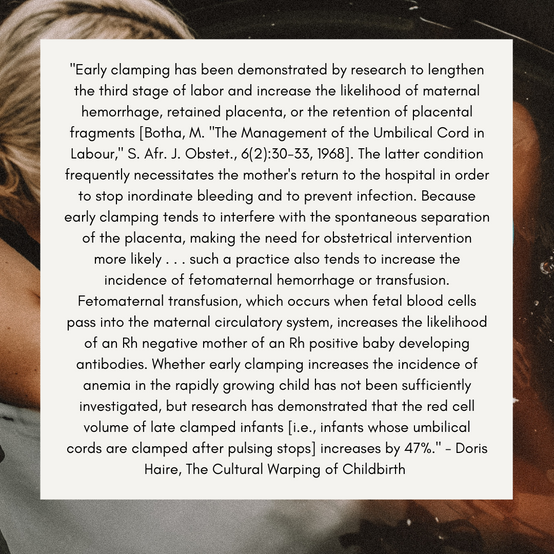Delayed Cord Clamping
- erinessentially
- Jul 29, 2021
- 2 min read

After your baby is born, the umbilical cord, which delivers blood, oxygen, and nutrients to your baby in utero and connects your baby to you, continues to pulsate, bringing more blood to your baby as it begins to transition to life outside the womb.
Immediate cord clamping deprives babies of 200 mls of blood. Maybe that doesn’t sound like much, but what if you knew that without that 200 mls of blood, the baby only has 400 mls, instead of a total of 600 mls? By practicing delayed cord clamping your baby could receive up to 30% more blood.

There are different definitions of delayed cord clamping. Best case would be to wait to clamp until the umbilical cord stops pulsing and turns white, and the placenta is delivered without intervention.
Placenta delivery:
Average time for placenta delivery is 10-45 minutes with an average of 20 minutes. When it’s ready, your uterus will contract and you will feel the urge to push out your placenta. There is no need to rush this or force the placenta out by pulling on it. Pulling on the cord to remove the placenta prematurely increases the risk of maternal hemorrhage.
Each of my home births I have practiced delayed cord clamping. It is an easy and natural part of birth that doesn’t require any intervention. My baby is born into my arms, and I get to soak up those magical moments waiting for my body to finish its work. The cord turns white, my body begins to contract, and I feel the urge to push (15-20 minutes after my baby is born). My midwives make sure it is completely intact (no little bits are left inside of me that could cause complications), then when I’m ready to get out of the tub, we clamp and cut the cord.
As a mother and advocate for yourself and your baby, you are allowed to ask for your birth to be handled in a specific way. Knowledge is power. Know your options, get your birth support team on board, make sure your HCP knows what you want and is willing to support you.











Comments